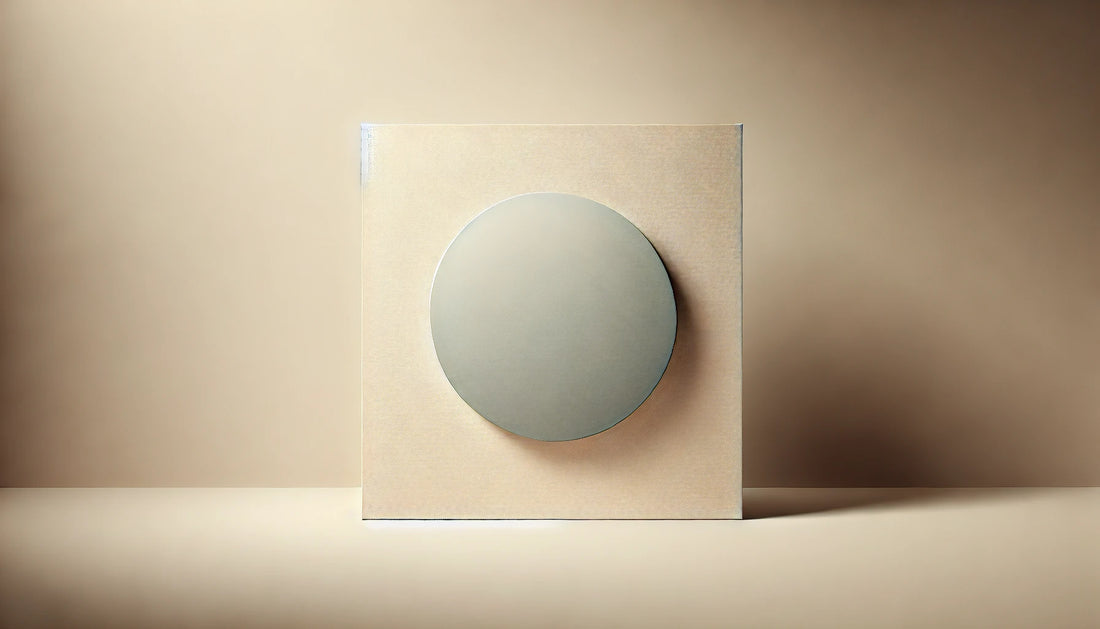
Mastering the Minimalist Aesthetic: Tips for Recognizing and Creating Minimalist Art
Share
Minimalism is more than just a visual style—it's a philosophy. Rooted in the idea of "less is more," minimalist art emphasizes clarity, simplicity, and the elimination of the unnecessary. While it might appear effortless, mastering minimalist art requires a deep understanding of design principles, intentionality, and creativity. Whether you're an artist exploring this approach or an admirer learning to appreciate its nuances, this guide will equip you with essential tips to recognize and create minimalist art.
What Is Minimalist Art?
Minimalist art emerged in the 1960s as a response to the complexity of abstract expressionism. Artists like Donald Judd, Agnes Martin, and Frank Stella championed this style, focusing on basic shapes, clean lines, and neutral tones. Minimalism emphasizes the purity of form and the absence of distraction. It invites viewers to engage deeply with the essence of the artwork rather than its superficial details.
Key Characteristics of Minimalist Art:
- Simple Geometric Forms: Squares, circles, and other basic shapes often dominate.
- Neutral or Limited Color Palettes: Shades of white, black, and gray are common, with occasional pops of muted colors.
- Negative Space: The empty areas of the canvas are as important as the filled ones.
- Repetition and Uniformity: Patterns and repeated elements create harmony.
- Focus on Materials: The texture and nature of materials—such as raw canvas or polished metal—are integral to the work.
Tips for Recognizing Minimalist Art
1. Look for Simplicity
Minimalist art strips away all that is unnecessary, focusing on essential elements. If the composition feels intentionally sparse and uncluttered, you're likely viewing minimalist work.
2. Examine the Use of Space
Negative space plays a critical role in minimalist art. Observe how the "empty" areas contribute to the overall balance and composition of the piece.
3. Identify Repeated Motifs
Repetition often creates rhythm in minimalist works. Notice how recurring patterns or shapes establish cohesion and draw attention to the underlying structure.
4. Appreciate Materiality
In many minimalist pieces, the material itself—be it wood, metal, or canvas—is part of the art. The texture, weight, and rawness of the materials often carry symbolic significance.
5. Focus on Emotion Through Restraint
Minimalist art frequently evokes a sense of calm, introspection, or meditative stillness. The absence of excessive detail creates space for personal interpretation and emotional connection.
Creating Minimalist Art
While minimalist art may appear simple, its creation demands thoughtful planning and a keen eye for design. Here are actionable tips for aspiring minimalist artists:
1. Start with a Clear Concept
Minimalism thrives on intentionality. Define the message or emotion you wish to convey. Strip your concept down to its most essential components.
2. Embrace Negative Space
Let your canvas breathe. Use negative space to frame your elements and guide the viewer's eye.
3. Limit Your Color Palette
Choose a restrained palette that complements your concept. Neutral tones are a hallmark, but muted accent colors can add depth without overpowering.
4. Simplify Your Composition
Ask yourself, "Does this element add value?" If the answer is no, remove it. Focus on creating balance and harmony with fewer elements.
5. Experiment with Repetition
Repetition is a powerful tool in minimalist art. Use it to create rhythm, unity, and emphasis in your compositions.
6. Highlight Materials
Whether you’re working with paint, clay, or digital media, let the texture and nature of your materials shine. For example, raw brushstrokes on canvas can add depth to an otherwise simple piece.
7. Draw Inspiration from Life
Minimalist art often mirrors the simplicity of nature. Observe patterns, shapes, and forms in your surroundings and translate them into your work.
The Digital Dimension of Minimalist Art
With the rise of digital tools, creating minimalist art has become more accessible than ever. Digital platforms allow artists to experiment with clean lines, geometric shapes, and limited palettes with precision. Popular software like Adobe Illustrator or Procreate is perfect for minimalist projects.
Pro Tip: Consider exploring AI tools to generate ideas or enhance your minimalist art. AI-generated art can help visualize minimalistic designs or offer inspiration for creative directions you might not have considered.
Why Minimalism Matters
In a world overwhelmed by sensory input, minimalist art offers a refreshing retreat into simplicity. It teaches us to appreciate what’s essential, embrace restraint, and find beauty in the understated. Minimalism transcends art—it’s a mindset that fosters clarity and mindfulness.
Inspiring Minimalist Artists to Explore
To deepen your understanding of minimalist art, study the works of these pioneers:
- Donald Judd: Known for his geometric sculptures.
- Agnes Martin: Celebrated for her serene grid paintings.
- Ellsworth Kelly: Renowned for his bold use of color and form.
Mastering the minimalist aesthetic involves more than just reducing visual clutter—it requires an intentional focus on what matters most. Whether you're an artist aiming to create minimalist works or an enthusiast seeking to understand this art form, embracing the philosophy of "less is more" can transform your perspective.
Dive into the world of minimalist art, and let simplicity guide your creative journey.


